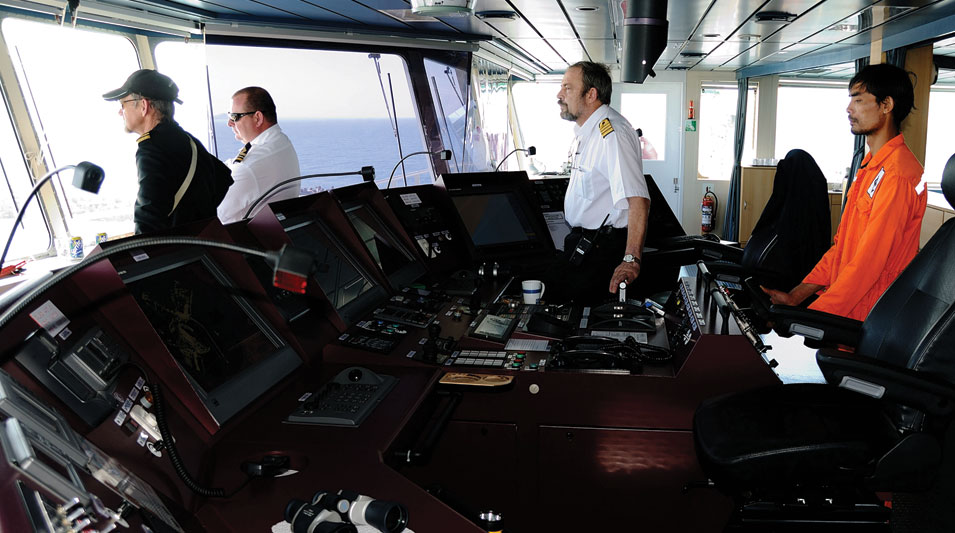
02 Oct Navigation Assessments
This newsletter always features at least one article on the safety and well being of our seafarers, but we must never forget that the lives of our crew depend ultimately on the seaworthiness of the vessel in which they are sailing. Safe navigation is, therefore, the first priority in safety.
A review of studies carried out by the IMO and other organisations suggests that well over 75% of all navigational accidents are caused by human error. Whilst some accidents are the clear result of ignorance or reckless behaviour, many more are caused by complacency, fatigue, over-reliance on technology and a general attitude, both onboard and in the office, that the practice of navigation is somehow not a priority activity. A number of high-profile accidents involving loss of life, extensive pollution and enormous financial costs should leave no one in any doubt that safe navigation is of the utmost importance, but the view that navigation is a peripheral activity still persists.
The aim of a Navigation Assessment is to redress the balance and focus the minds of both the ship’s bridge team and the management ashore on the importance of safe navigation.
All shipping companies carry out some form of navigational audits. This is usually done as part of a wider ISM audit, and whilst some companies do specify that navigation has to be audited whilst the vessel is at sea, it is often the case that these audits are conducted in port.
The idea is that a Navigation Assessment differs from an audit in that it allows the real time taken to carry out navigational activities to set the pace of the assessment, rather than compressing an audit into the time available. The aim is to have a thorough look at how a vessel is being navigated and provide guidance and assistance where required. Whilst the difference between “Audit” and “Assessment” may be difficult to define, the key features of the Navigational Assessment are as follows:
- It is conducted in real time at sea
- It is longer than a standard ISM audit
- It is more detailed
- It is “Non-invasive”, or at least less-invasive – the majority of the assessment is actually observing policies being followed and procedures being implemented, (the idea being that crew will behave as they would without the assessor being present)
- It is possible to observe equipment being operated and tested. (radars, ECDIS, AIS etc.)
- The pace of the assessment is governed by the activity (e.g. pre-departure checks require a minimum finite time to complete, to observe the 4-8 watch will take 4 hours minimum)
- The time spent reviewing historical records can be reduced (as it is possible to see the records actually being created and hence confirm their correctness.)
- The officers being assessed can ask questions and make suggestions at any time
- Any Corrective Action can commence immediately and be seen to be effective before the end of the assessment (reducing follow up for the ship owner / manager)
- Examples of good practice can be adopted as company policy and shared throughout the fleet
Each assessment may be broken down into the follow- ing parts:
- Review of policies & procedures 2. Review of bridge equipment
- Review of bridge ergonomics
- Passage planning
- Charts & publications
- Watchkeeping skills and Bridge Team Management (including COLREGS)
- Meeting & findings (Note: the assessment does not have Non-Conformities, Deficiencies or Observations, it has “Findings”
Whilst it is most important that this does not become a “Tick box” exercise, the assessment must still be both systematic and detailed and therefore requires some form of questionnaire or “aide memoir” to ensure that the assessor covers all the necessary points. Uniteam Marine has developed procedures based on SOLAS, industry best practice and guidance from the Oil Companies International Marine Forum (OCIMF) and the Nautical Institute.
It is clearly important that the person carrying out the audit is sufficiently qualified and experienced to make a clear and credible assessment report, gain the trust of the Master and crew and provide advice and mentoring to all members of the bridge team. The Nautical Institute has established a programme of training and certification for suitable candidates which begins with a two-day course. After completing the course, the candidate must complete a Navigation Assessment voyage and submit the assessment report to the Nautical Institute for review. The final step is an interview to discuss the conduct and findings of the assessment. If all sections are completed successfully, the candidate is awarded a Navigation Assessor Certificate by the Nautical Institute which is valid for five years. So far two members of Uniteam Marine have successfully achieved this accreditation and have started to develop the assessment process throughout our managed fleet.
It is early days, but the Navigation Assessment programme is on track to accurately determine and quantify the navigational risk to our ships and the company, provide onboard guidance and mentoring, and encourage our navigating officers to take a renewed pride in their profession.
Peter Chilman, QSE Manager, Uniteam Global Business Services
